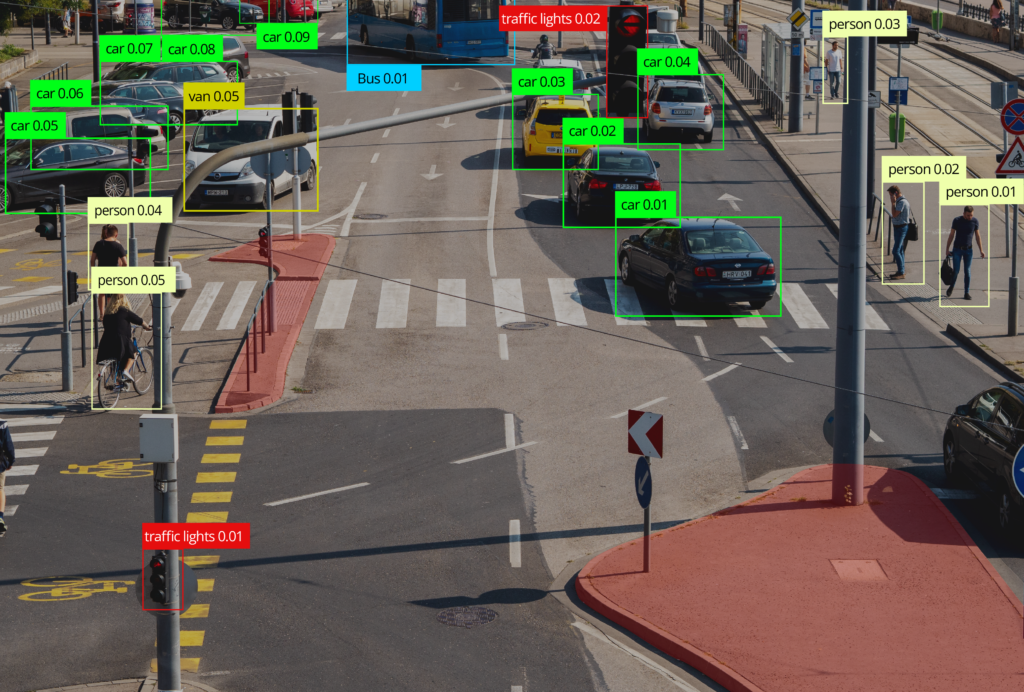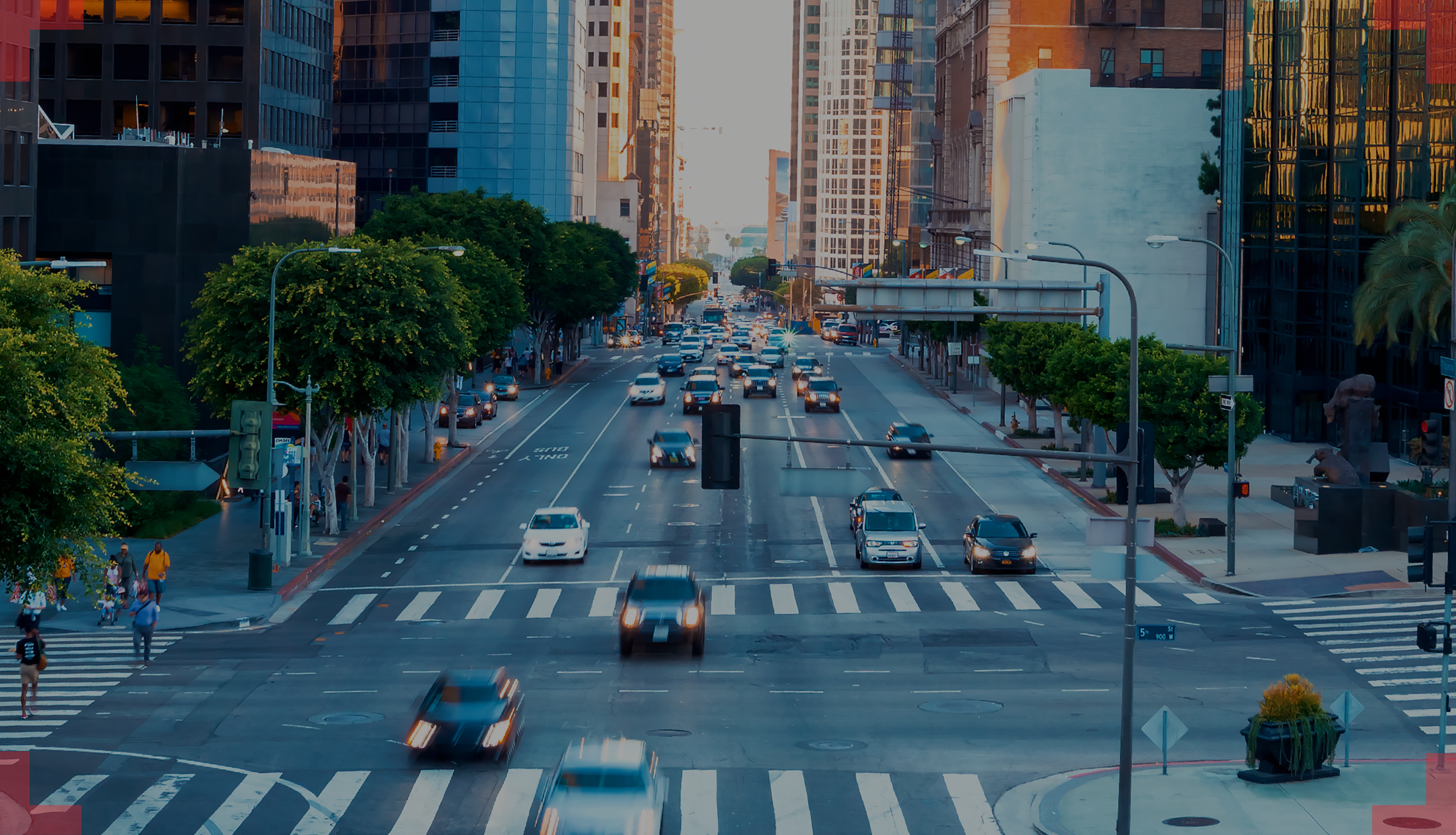Smart Intersections: Vision AI Solution for Real-Time Traffic Monitoring
- Wanpherlin M Shangpliang
- November 14, 2023
Introduction
Understanding and managing traffic volume is essential for various stakeholders, including transportation agencies, local administration, and infrastructure planners.
This traffic information is important for urban planning, managing transportation, analyzing safety, assessing environmental impact, making economic decisions, & formulating effective government policies.
When it comes to monitoring traffic, there are two primary methods i.e., intrusive and non-intrusive approaches. The traditional way involves putting sensors directly on the road, which is quite common. However, there’s a new wave of non-intrusive technologies offering a dependable alternative. These include methods like manual counts and advanced tools such as traffic video detection systems, infrared detectors, microwave radar, laser, and ultrasonic detectors. All these devices represent a rapidly expanding field of application that is experiencing substantial growth due to advancements in sensor technology and Computer Vision.
Real-time traffic monitoring is a critical aspect of modern urban planning, offering insights into dynamic traffic patterns. However, monitoring intersections, where vehicles and pedestrians exhibit non-continuous motion, introduces challenges. Motion-based detection methods face difficulties in such scenarios, impacting the accuracy of data collection.
To address these challenges, there is a growing exploration of innovative solutions like real-time monitoring using video analytics. By leveraging video feeds from traffic cameras, this approach provides instant insights into traffic flow, identifying potential issues such as congestion or irregularities. Real-time monitoring allows for prompt decision-making in response to changing traffic conditions, contributing to more effective Traffic Management.
The Unseen Challenges Faced in Monitoring the Traffic
Given the importance of transportation infrastructure, traffic monitoring plays a critical role in aiding the improvement of traffic volumes and congestion levels.
Several challenges exist in Traffic Monitoring.
- Data Accuracy, Volume, and Privacy: Keeping accurate and voluminous data while also maintaining privacy is a challenge.
- Data Integration: Integrating data from different sources and formats, including real-time traffic data, historical data, weather information, and other relevant data, can be complex. Data integration is necessary for a comprehensive understanding of traffic conditions.
- Traffic Congestion: Managing and alleviating traffic congestion is a continuous challenge. Traffic congestion can lead to delays, increases in fuel consumption, & negative environmental impacts.
- Data Processing and Analysis: Analyzing insights from large datasets in real-time is a computational challenge. Advanced algorithms and data analytics are needed to process and interpret the data effectively.
- Communication and Connectivity: Reliable communication and connectivity are essential for transmitting real-time data from monitoring points to traffic management centers. Network outages or failures can disrupt traffic monitoring.
- Urban Growth and Development: The rapid growth of urban areas and changing city landscapes pose challenges in adapting Traffic Monitoring Systems to accommodate increasing population and traffic demands.
Market Projections

Source: Polaris Market research
The market for Global Traffic Management was valued at 35.40 billion USD in 2021 & is expected to grow at a CAGR of 12.1% during the forecast period. This projection underscores the growing importance of AI-powered solutions, including ANPR, Overspeeding detection, and Accident detection, in modern traffic control.
Real-Time Traffic Flow Monitoring with Vision AI

Using Deep Learning algorithm, AI vision-based real-time traffic flow monitoring system detects and tracks vehicles at intersections. This advanced system effectively extracts diverse types of traffic flow information, including directions, duration, total and categorical counting of vehicles, even under challenging circumstances such as rainy or snowy weather conditions, camera shaking, day/nighttime, partial or full occlusion, and various illusion occurrence cases.
To monitor the trajectories of pedestrians and vehicles, this system incorporates detection and tracking components. With the aim of ensuring accuracy, the tracking system filters the data. The collected data is then processed to estimate various traffic measurements, such as turning movements, speed, and waiting times. Additionally, the system integrates a simulation framework for comprehensive intersection analysis, encompassing the design of intersections and optimal traffic signal placement. By combining TMC data, including turning movement counts, with the simulation, this system generates valuable traffic measurements, such as travel time and lane density, for in-depth analysis.
This state-of-the-art system aims to greatly assist transportation engineers in designing and planning intersections based on real-world traffic behavior, thereby contributing to more efficient and effective transportation infrastructure.
Technological Capabilities of Vision AI Traffic Monitoring System
Vehicle Tracking: Computer Vision enables accurate tracking of vehicles, logging license plates, and capturing images for record-keeping.
Abnormality Detection: Automatic identification of abnormalities, such as vehicles deviating from their route, enhances proactive management.
Traffic Flow Monitoring: Real-time monitoring of traffic levels, distinguishing between high, medium, and low flows, aids in dynamic traffic management.
Event Alerts: Automatic alerts for events like stopped units, unauthorized entries, or accidents contribute to rapid response and intervention.
Dynamic Signage: Smart signage dynamically adapts to traffic conditions, providing real-time information and warnings to drivers through personalized messages.
Digital Message Screens: Exterior message screens display relevant information to drivers, enhancing communication and road safety.
Control Center Dashboard: A centralized dashboard allows authorities to view events, manage road operations, and send manual or automated messages to external screens.
The Impact of AI in Traffic Monitoring
AI in Traffic Monitoring has a significant impact on various aspects of transportation and urban planning. Notable areas where this impact can be seen are:
- Enhance Parking Efficiency: Urban planners play a crucial role in maximizing parking lot utilization and occupancy, contributing to a better cityscape.
- Efficient Traffic Management: Through comprehensive traffic analysis and prompt decision-making, urban planners can effectively address the ever-growing traffic challenges, ensuring optimized transportation routes and intersections.
- Ensuring Road Safety: By closely watching traffic flows, road usage, & road conditions, urban planners can identify and prevent safety-critical incidents, eventually prioritizing the well-being of all road users.
Managing traffic in cities is a big challenge as they grow. But things are changing for the better with the help of AI. AI uses smart technology like Computer Vision, Deep Learning, and real-time Video analysis. This tech is making a big difference in how we understand, manage, & plan for traffic.
As cities expand, the complexity of the transportation networks increases. AI vision-based traffic monitoring systems provide a comprehensive solution to the intricate challenges faced by urban planners and transportation authorities. These systems empower decision-makers with real-time insights, leading to more effective traffic management and infrastructure planning by enhancing parking efficiency and ensuring road safety.
Contact us today to explore how AI-driven solutions can transform your approach to traffic monitoring.

